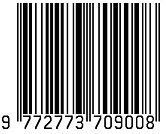Secure Cloud Storage Solution with “Seafile” & “NextCloud”: A Resilient Efficiency Assessment
DOI:
https://doi.org/10.31357/ait.v3i2.7341Keywords:
attacks, cloud efficiency, data encryption, Google cloud, Seafile cloud, security and privacyAbstract
Storage and file synchronization have become increasingly important services in our everyday lives. With cloud storage providers giving users access to file space in the cloud, one might wonder how efficient these cloud storage providers are with their encryption methods. There are many different cloud storage providers and programs to set up a cloud storage solution. This paper focuses on two secure cloud storage solutions, Seafile, and NextCloud, and determines the efficiency of these cloud storage solutions’ encryption methods. By determining the efficiency of these secure cloud storage providers’ encryption methods, it can help others determine which of these providers will fit their needs. To determine efficiency, the CPU, memory, and network usage of these cloud storage solutions will be measured at idle and when files are being uploaded to them. To measure the CPU, memory, and network usage, ‘dstat’ will be used to capture their usages and record them to a CSV file. It is expected that both cloud solutions will have better performance when they have files being uploaded to them with no encryption. However, with the encryption methods of both cloud solutions being lightweight, that was not the case.
Downloads
Published
How to Cite
Issue
Section
Categories
License
Copyright (c) 2024 Gavin Dutcher, Koku Azianyo, Thivanka P.B. M. Dissanayake, Akalanka B. Mailewa

This work is licensed under a Creative Commons Attribution-NonCommercial-NoDerivatives 4.0 International License.
The Authors hold the copyright of their manuscripts, and all articles are circulated under the terms of the Creative Commons Attribution License, which permits unrestricted use, distribution, and reproduction in any medium, as long as that the original work is properly cited.
The use of general descriptive names, trade names, trademarks, and so forth in this publication, even if not specifically identified, does not imply that these names are not protected by the relevant laws and regulations. The authors are responsible for securing any permissions needed for the reuse of copyrighted materials included in the manuscript.




